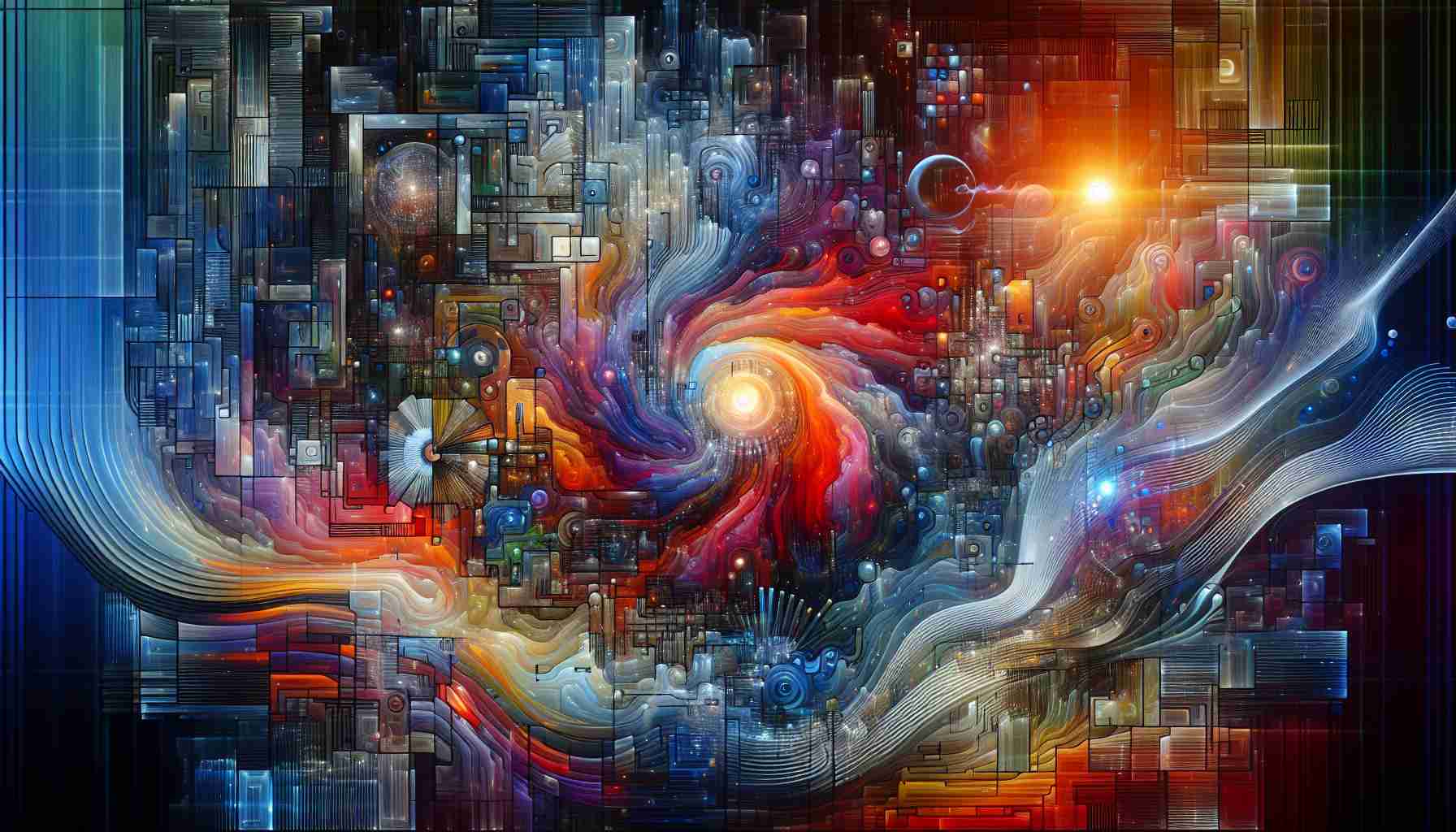Ouchhh Studio stands at the forefront of blending art, science, and technology, crafting a new breed of cognitive art they’ve termed as “data painting.” With over a decade of experience, this innovative studio has been transforming emotions and thoughts into visual masterpieces, using artificial intelligence as their brush.
The Intersection of Data and Design
Founders Ferdi Alıcı and Eylül Alıcı have been dedicated to the new media field for many years, continuously pushing the boundaries of traditional artistic expression. Their journey, rooted in the educational pursuit of visual communication design, has led to a collaboration with Hollywood’s elite, including designing the personality of an artificial intelligence antagonist in a “Mission: Impossible” film starring Tom Cruise.
Monumental Collaborations and Achievements
Ouchhh’s vision sees no limit to their canvas – they’ve extended their art from classic surfaces to architectural marvels, including the prestigious Burj Khalifa and Singapore’s ArtScience Museum. Ferdi Alıcı emphasizes their evolution from paint to data as the key medium, with algorithms serving as their palette. The tools they employ enable them to capture human sensibilities like attention, imagination, and creativity, transforming them with artificial intelligence into multidimensional experiences.
Their groundbreaking work has attracted attention, leading to projects featuring prominent personalities like Idris Elba and Norman Foster, presented by none other than Oprah Winfrey. Specialized in turning complex data into artworks, they’ve even developed space’s first artificial intelligence art piece, set to be permanently displayed on the moon’s surface.
A Fusion of Intelligence
Eylül Alıcı suggests that the question of AI’s creativity is not about competition with human intellect but rather about how these technologies can enhance human endeavours. Their dynamic approach keeps Ouchhh at the cutting edge, proving that machines could potentially outdo human creativity within five years.
Global Reach of Interdisciplinary Innovation
Establish beauty and innovation worldwide, extending their influence through partnerships in major cities including Los Angeles, Vienna, Barcelona, Paris, London, and Berlin. Ouchhh Studio utilizes state-of-the-art technology not merely as a tool but as an integral component of their creative manifesto, ensuring that each creation is not just seen but experienced.
Relevant Additional Facts:
– Artificial Intelligence (AI) in art utilizes machine learning algorithms to analyze and create artworks that can evolve over time and potentially present novel artistic styles.
– Data painting involves using datasets to inform and generate visual artwork, often resulting in complex patterns or abstract representations.
– Other artists and organizations, such as Refik Anadol and Google’s DeepDream, have also explored the intersection of AI and art, showcasing the growing interest in this field.
Important Questions and Answers:
– Is AI truly creative, or is it merely executing programmed tasks? While AI can generate artwork that may appear creative, there is debate over whether this constitutes true creativity or is simply the result of complex algorithms processing data according to human-designed rules.
– How does AI impact the role of the artist? AI changes the artist’s role from creator to collaborator. Artists are increasingly working alongside AI as a partner in the creative process, utilizing its capabilities to explore new forms of expression.
Key Challenges and Controversies:
– The authenticity of AI-created art is contested, with some critics questioning if art created by algorithms can carry the same emotional depth as human-made art.
– The potential for AI to replace human artists elicits concerns about job displacement and the devaluation of traditional artistic skills.
Advantages and Disadvantages:
– Advantages:
– AI can process large datasets to reveal patterns and insights that may be imperceptible to humans, opening up new creative possibilities.
– AI enables the creation of art at a scale and complexity that would be difficult or impossible for individual artists to achieve manually.
– The integration of AI in art can lead to innovative, immersive experiences that engage audiences in novel ways.
– Disadvantages:
– AI may lack the intrinsic emotional connection and the intuitive decision-making that characterizes human artistry.
– There are ethical concerns about data privacy and the potential misuse of AI-generated art for disinformation.
– The accessibility of AI tools may stratify the art world, with those lacking technical skills or resources left behind.
Related Links:
– Visit Artificial Intelligence for more information on AI’s broad impact.
– Explore Modern Art Museum for insights into contemporary art innovations.
– Learn about the latest in machine learning at Machine Learning.
The source of the article is from the blog smartphonemagazine.nl

